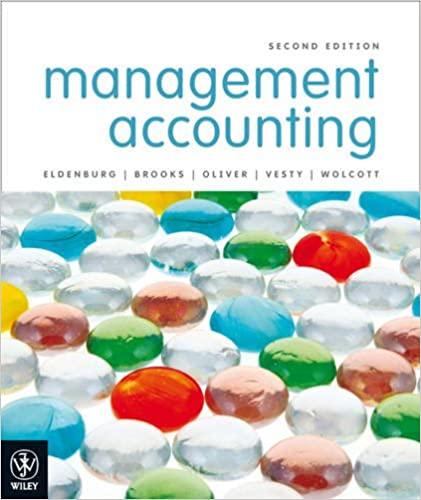Answered step by step
Verified Expert Solution
Question
1 Approved Answer
SHOW WORK AND FORMULAS FOR THUMS UP WORD PROBLEM ANSWER ALL THE FOLLOWING PROBLEM Physical Units Method, Relative Sales-Value-at-Split-off Method, Net Realizable Value Method, Decision
SHOW WORK AND FORMULAS FOR THUMS UP 

Physical Units Method, Relative Sales-Value-at-Split-off Method, Net Realizable Value Method, Decision Making Sonimad Sawmill, Inc. (SSI), purchases logs from independent timber contractors and processes them into the following three types of lumber products: 1. Studs for residential construction (e.g., walls and cellings) 2. Decorative pieces (e.g., fireplace mantels and beams for cathedral ceilings) 3. Posts used as support braces (e.g., mine support braces and braces for exterior fences around ranch properties) These products are the result of a joint sawmill process that involves removing bark from the logs, cutting the logs into a workable size (ranging from 8 to 16 eet in length), and then cutting the Individual products from the logs, depending upon the type of wood (pine, oak, walnut, or maple) and the size (diameter of the log. The joint process results in the following costs and output of products during a typical month: Joint production costs: Materials (rough timber logs) $500,000 Debarking (labor and overhead) 60,000 Sizing (labor and overhead) 200,000 Product cutting (labor and overead) 250,000 Total Joint costs $1,010,000 Product yield and average sales value on a per-unit basis from the Joint process are as follows: Monthly Fully Processed Product Output Sales Price Studs $8 80,000 5,000 Decorative pieces 100 Posts 15,000 20 The studs are sold as rough-cut lumber after emerging from the sawmill operation without further processing by SSI. Also, the posts require no further processing. The decorative pieces must be planed and further sized after emerging from the SSI sawmill. This additional processing costs SSI $120,000 per month and normally results in a loss of 10 percent of the units entering the process. Without this planing and sizing process, there is still an active Intermediate market for the unfinished decorative pieces where the sales price averages $60 per unit. Required: 1. Based on the informatie o Senmad Sawmil, the allocate the sourcing costs of $1,010,000 to each of the the product lines in the have value aspitated. When required, round decimal values to four places before converting to a percentage. For example, 38349 would be rounded te.8835 and entered as "88.35" percent. Monthly Sale Price Relative Sales Value Percent of Allocated Joint Output per Unit at Split-on Costa Stude Decorative Posts Total (Note: Dirence due to rounding b. Physica unta method at spital Allocated Joint Costa Unite Pent Joint Cust Studs Decorative Pasta Total Gimed at rette valmthout When required, round decimal was to four places before converting to a percentage. For exam, 16340 would be rounded to and entered as 8.38 percent. Fully Processed Monthly Sales Price Net Realizable Percent of Estimated Allocated Unit Output per Unit Value Value Joint Costs Studs Deco Total (Note: de la round 2. Prepare an analysis for Sonimad Sawmil, Inc., to compare processing the decorative pieces further as it presently does, with selling the rough-cut product immediately at spac-off. Sonimad Sawmill, Inc. Analysis Report Monthly unit output Final sales value Differential revenue Additional contribution from further processing WORD PROBLEM 

ANSWER ALL THE FOLLOWING PROBLEM


Step by Step Solution
There are 3 Steps involved in it
Step: 1

Get Instant Access to Expert-Tailored Solutions
See step-by-step solutions with expert insights and AI powered tools for academic success
Step: 2

Step: 3

Ace Your Homework with AI
Get the answers you need in no time with our AI-driven, step-by-step assistance
Get Started


